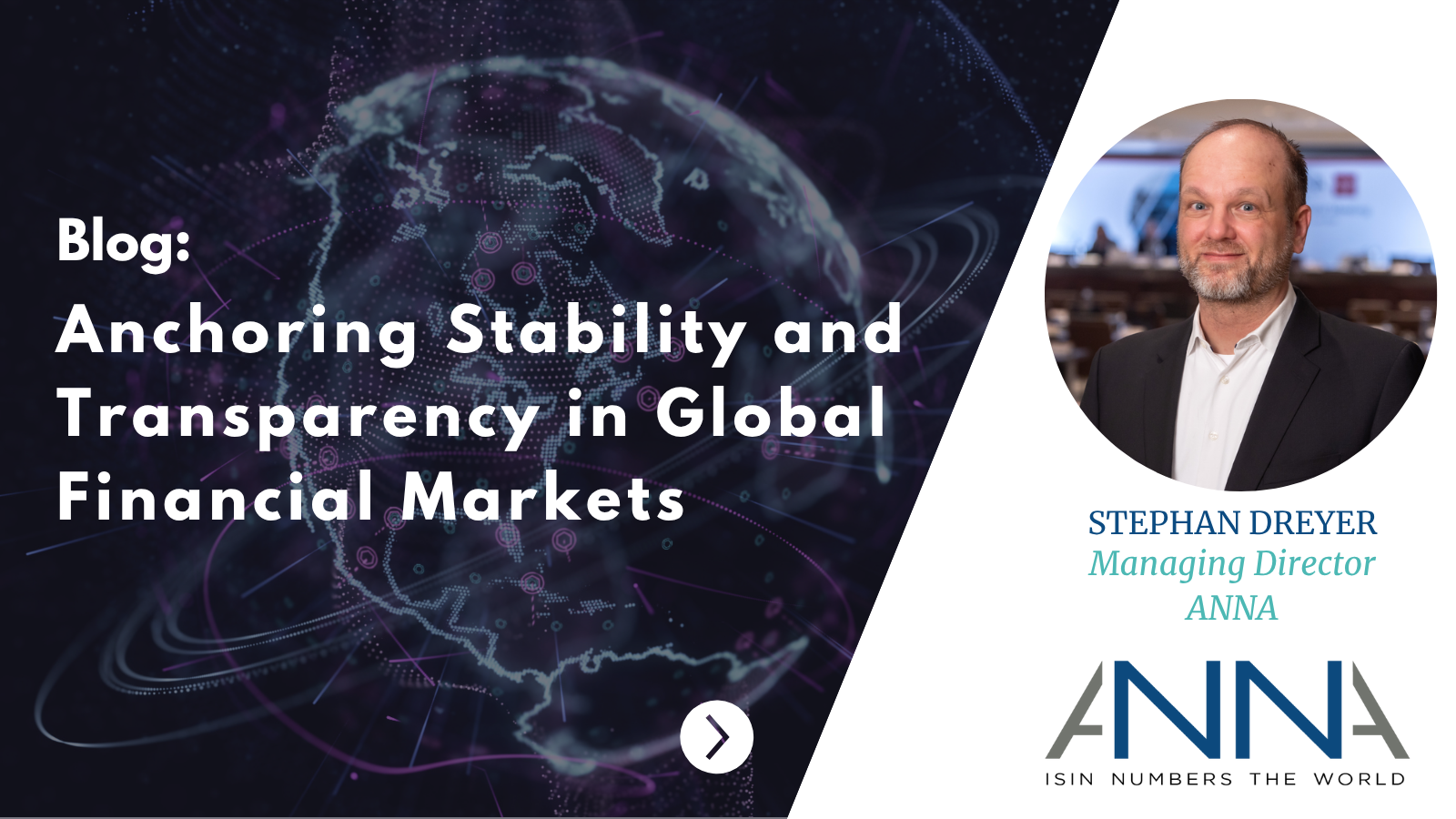First published on TabbFORUM, 25 June 2025. A universal language Consensus-based financial standards developed by…
Georg Eisel 1994-2008 Member of the Board – Q&A on the ANNA Anniversary
Georg Eisel 1994-2008 Member of the Board
Q&A on the ANNA Anniversary
ANNA: Can you tell us why you think ANNA has been successful?
Georg Eisel – If you deal exclusively and intensively with one thing, you quickly forget how time flies. Also that 30 years have passed since ANNA has successfully turned to the exciting topics of developing and implementing standards in the financial industry. The success is also based on the pioneering work of specialists who recognised the signs of the times and the need for rationalisation through standardisation at an early stage and thus created the prerequisites for an ongoing process, unbroken up to our days.
What do you remember about the years before ANNA and the events which created the need for ANNA?
Georg Eisel – In 1960, the EU bond market was characterised by the issuance of physical papers in ever larger volumes. This made efficient handling of the transfer of securities for clearing and settlement difficult. The use of an Optical Character Recognition OCR became mandatory for printing on the securities to relieve the physical exchange of documents. The “dematerialisation” only started later in 1962, initiated in France. Central institutes emerged parallel to the national custodians, EUROCLEAR-1968, CEDEL-1970, each institute still with its own identification number system. These were integrated into the ISIN standard in 1991 as common code, prefix XS.
Then, by 1970, specialists in Europe and the USA began to optimise the registration of national securities through NSINs – National Securities Identification Numbers. These working groups became ISIN specialists who enlivened the ISO 6166 standard. Only this offered ideal conditions for redesigning integrated data and information processes across national borders.
In the 1980s, increasing presence in computer technology enabled the development of financial databases based on complex relational, financial data models. The first integrated online information systems should provide information about financial instruments, issuers about prices and corporate actions. With the help of reference data feeds, computerised back office trading and clearing systems could increasingly be supported.
All of these developments required reliable data based on recognised standards. Market requirements demanded the stringent identification and classification of issuers, financial instruments, and trading venues with all their usages. The development of further workable standards for the financial industry began. This was actively supported by the national standardisation bodies such as: DE: DIN, CH: SNV, US: ANSI etc.
ANNA: What can you tell us about your memories of those early years of ANNA?
Georg Eisel – In 1992, ANNA, the Association of National Numbering Agencies, was founded by 22 members. The self-imposed task began to offer the ISO standard 6166 an active international platform. ANNA has become a committed and recognised partner for various national and international financial and information services. Last but not least, a competent partner for the operational implementation of regulations and directives for more market transparency.
The development of further sets of rules, in accordance with the dynamic market requirements, was a central task and led to committed cooperation with ISO to update ISO 6166. In addition to the central task of the NNAs to determine and register the ISIN according to the rules for their jurisdiction, there was also the requirement to exchange this with the interested NNAs at the same time. Initially, this was done using traditional media such as TELEX, FAX, TELEPHONE.
Then in 1994, with the rapid development of global financial services, the operation of the first reference database, the Global ISIN Access Mechanism -GIAM-, was initiated. New members from the so-called emerging markets were integrated in a practice-oriented manner through special workshops. Usually, two general assemblies took place annually, often organised by new members. These meetings formed and supported the cohesion necessary for this task. A visionary and service-oriented community emerged. By the 2000s, ANNA was well established.
ANNA: What milestones after that do you think shaped its evolution?
Georg Eisel – By 2001, with the new ANNA Service Bureau, a significantly expanded quality control and timely support of the NNAs arose. GIAM had been replaced by a new global register of all financial instruments with the most important reference data. Innovative financial products demanded stringent regulations for market transparency and increased the requirements for the provision of ever faster and more complex services.
In 2003, the availability of the ISIN was the prerequisite for an important milestone for the operational, binding introduction of the ISIN in Germany and Austria. Further standards had now become the ultimate companion of the ISIN. These were the CFI, the Classification of Financial Instruments and the FISN, Financial Instrument Short Name. Now the fundamental reference data was completely up-to-date and high quality, ready to be fed into the information service process chains.
Then in 2005, with the growing acceptance of the ISIN, ANNA increasingly qualified as a service provider in matters of data and services. The task of the board also consisted of moderating an often challenging coordination with market participants who were also ANNA members. A solid understanding of the members’ responsibility, derived from many years of working together, ensured the continuous growth of this organization. The number of members grew steadily, in line with the increasing globalisation of the financial markets.
ANNA: Where do you think ANNA will be needed in the future?
Georg Eisel – New market developments will determine the program. These also ensure the highly complex online issuing of ISINs for structured financial products with an extremely high frequency. A further expanded ANNA service office in London with a future-oriented computer system would ensure the necessary presence. It is hoped that this will continue to direct ANNA’s gaze into a challenging future.
The constant expansion and innovation of the financial markets will make ANNA forget in the future how quickly time flies, and it is to be allowed to grow older, but not to put on any moss.



